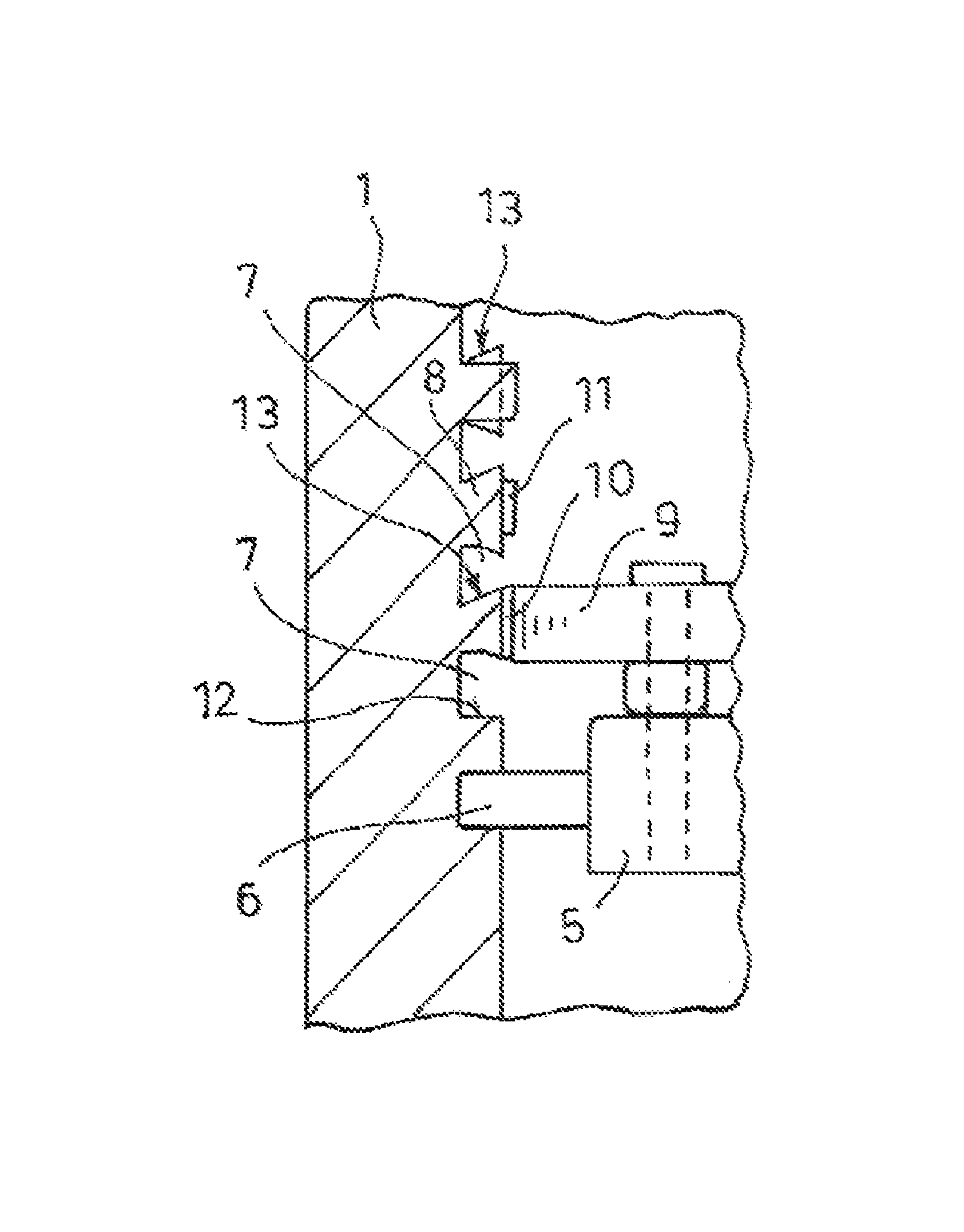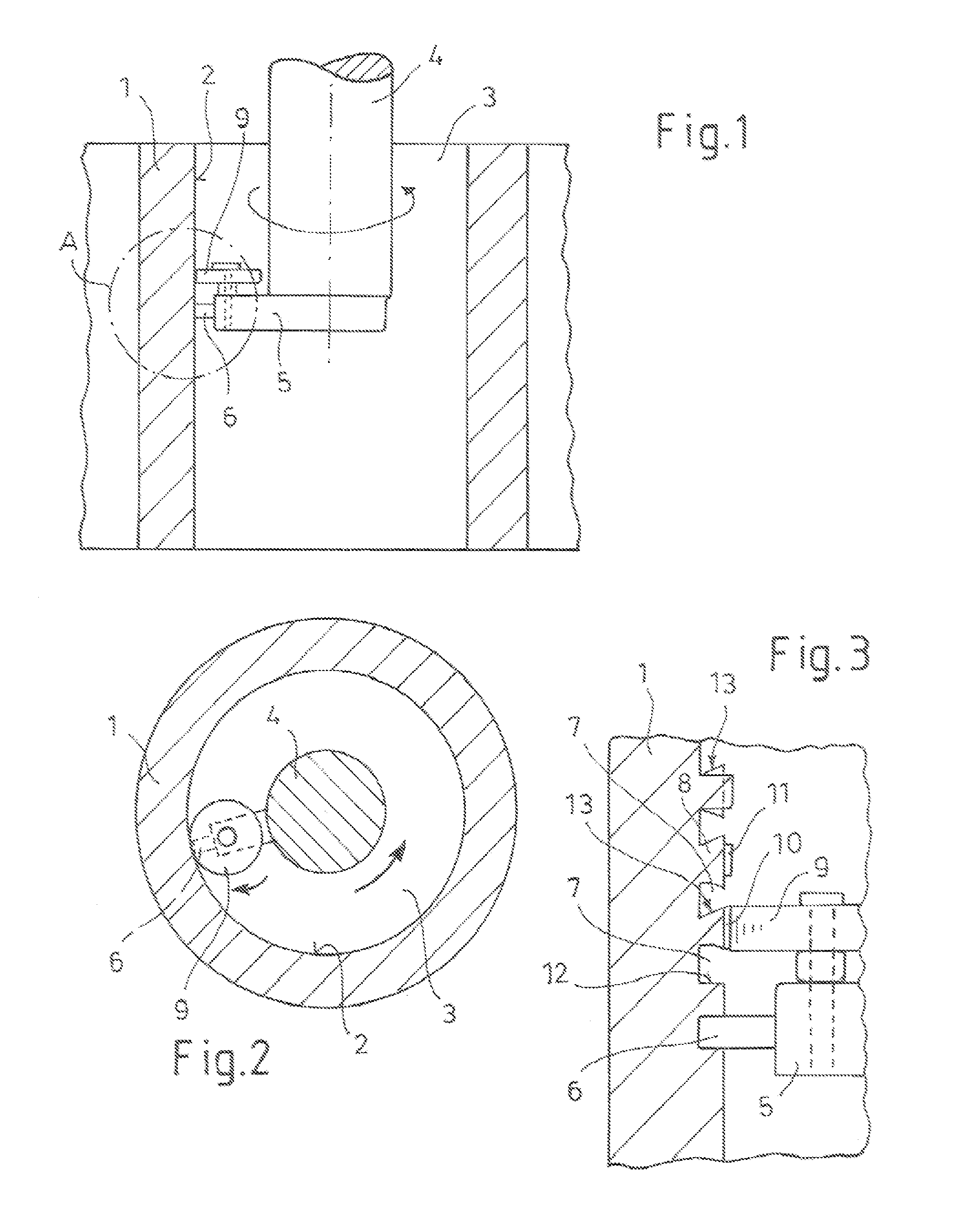Process for roughening metal surfaces
a metal surface and roughening technology, applied in the direction of metal-working feeding devices, forging/pressing/hammering apparatuses, handling devices, etc., can solve the problems of plastic deformation of ridges over their entire length, requires a relatively large effort, and the shape of undercuts is constant only with difficulty, so as to achieve the effect of reducing the amount of undercuts and ensuring the effect of smoothness
- Summary
- Abstract
- Description
- Claims
- Application Information
AI Technical Summary
Benefits of technology
Problems solved by technology
Method used
Image
Examples
Embodiment Construction
[0030]FIGS. 1 to 3 show an arrangement for carrying out a surface roughening. The workpiece may be, for example, a cylinder block 1 and has a metal surface 2 which is prepared by means of the process in order to make it possible to apply a sprayed layer. A tool holder 5, which bears a turning tool 6, is fastened to a tool spindle 4. Since the tool spindle 4 rotates and slowly moves downward into the cylinder bore 3, the turning tool 6 produces, in the metal surface 2, the grooves 7 which run in the circumferential direction and have the intermediate ridges 8.
[0031]A rotatable knurling roller 9 is arranged on the tool holder 5 and acts on the ridges 8 by means of regular projections 10 which are arranged on the circumference and, when the rotary spindle 4 rotates, plastically deform the ridges 8 at regular intervals in the form of knurls or flutes 11. These flutes 11 in turn produce the undercuts 13 on the groove flanks 12 of the ridges 8.
[0032]The knurling roller 9 is set back axial...
PUM
| Property | Measurement | Unit |
|---|---|---|
| adhesion | aaaaa | aaaaa |
| degree of plastic deformation | aaaaa | aaaaa |
| plastic deformation | aaaaa | aaaaa |
Abstract
Description
Claims
Application Information
 Login to View More
Login to View More - R&D
- Intellectual Property
- Life Sciences
- Materials
- Tech Scout
- Unparalleled Data Quality
- Higher Quality Content
- 60% Fewer Hallucinations
Browse by: Latest US Patents, China's latest patents, Technical Efficacy Thesaurus, Application Domain, Technology Topic, Popular Technical Reports.
© 2025 PatSnap. All rights reserved.Legal|Privacy policy|Modern Slavery Act Transparency Statement|Sitemap|About US| Contact US: help@patsnap.com



